#fechten
Explore tagged Tumblr posts
Text
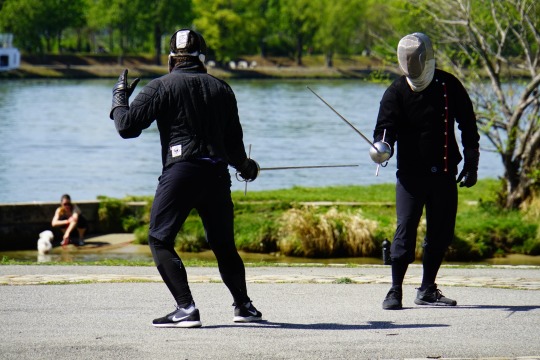

06/04/2024
vienna, austria
burak buyukbunar
3 notes
·
View notes
Text



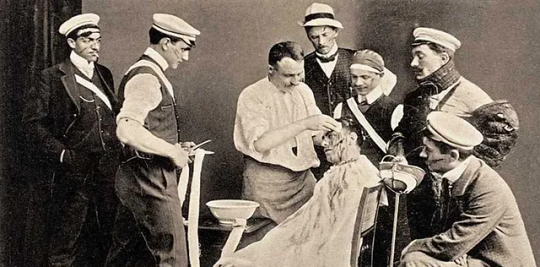
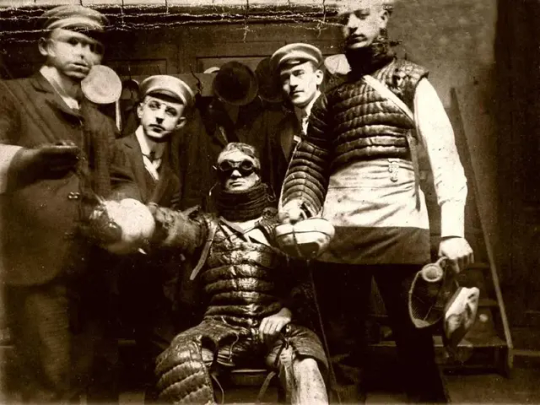

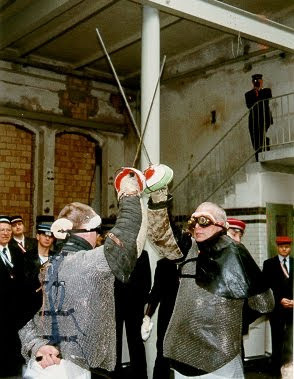

Mensur
Forma de esgrima tradicional practicada en asociaciones estudiantiles alemanas. Tiene su origen en el Renacimiento, pero se realiza hasta hoy en día.
Los combates se dan entre miembros de la misma Studentverbindung. En contraposición con la mayoria de formas de esgrima y combate, los oponentes se mantienen estáticos. El objetivo es demostrar coraje al recibir los golpes de sable en la cara.
En algunos casos las heridas son rellenadas con crin de caballo para provocar una cicatriz más profunda y permanente. Estas son consideradas marcas de honor y, hasta principios del siglo XX, se consideraba que ningún hombre podía sostener un cargo público sin tener al menos una de ellas.
9 notes
·
View notes
Photo



*
youtube
#klappstuhl#marcel breuer#maskentanz#equilibristik#bauhausbühne#formenübungen#maske#fechten#1927#tom jenkins#squarepusher#fuji rock festival#2001
0 notes
Photo

0 notes
Photo
Holaaaa

From Wiktenauer:
The exploits of 19th century martial arts researchers like Hutton and Novati are well known in the modern HEMA community. Less well known are the efforts in the early 20th century. The manual of Wilhelm Fabricius is one such work. He created a syllabus for two-handed sword fencing based on Meyer and Talhoffer for the Pfadfinder (the German branch of the scouting movement) in the early 1930s. Unfortunately, it was created shortly before the Pfadfinder were disbanded and replaced by the Hitler Jugend, who apparently co-opted the manual for their own purposes.
At least two printings were conducted, in 1935 and 1936, under the title “Ritterliche Waffenspiele, Schwert- und Stock-fechten, Bogenschiessen, Armbrustschiessen, Bau von Übungswaffen. Mit 66 abbildungen nach Zeichnungen des Verfassers”.
(via facebook)
22 notes
·
View notes
Text
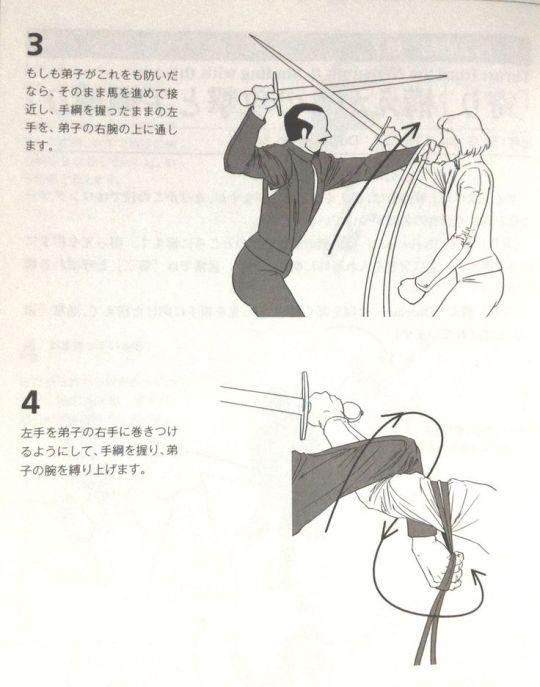
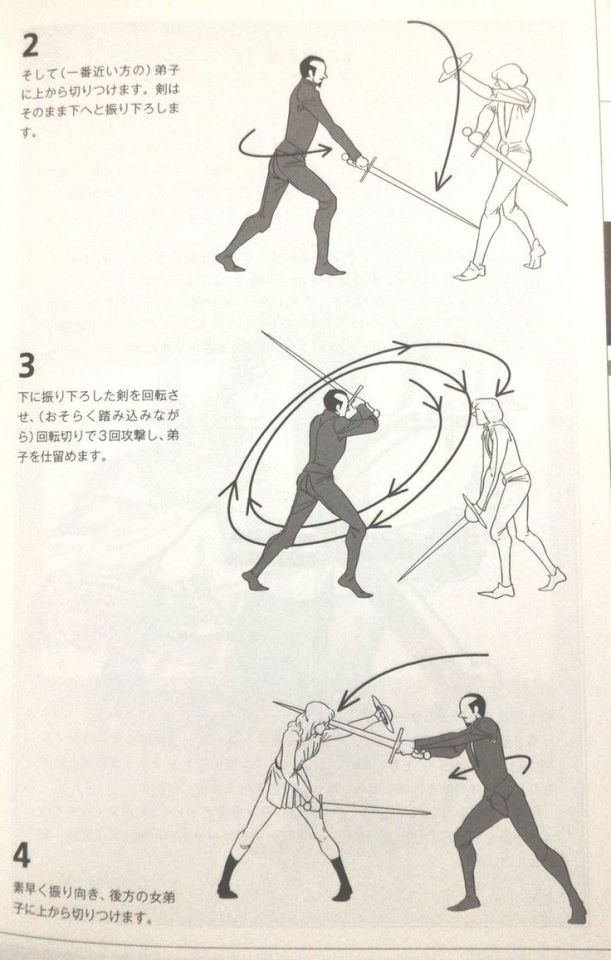


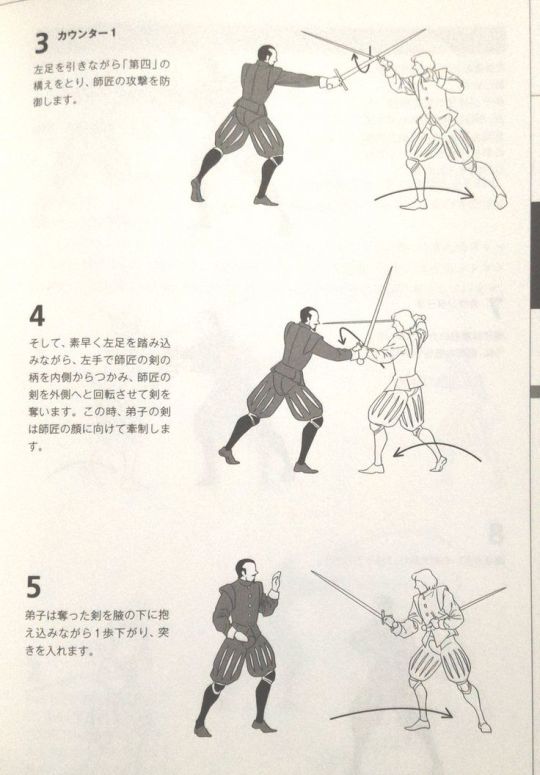
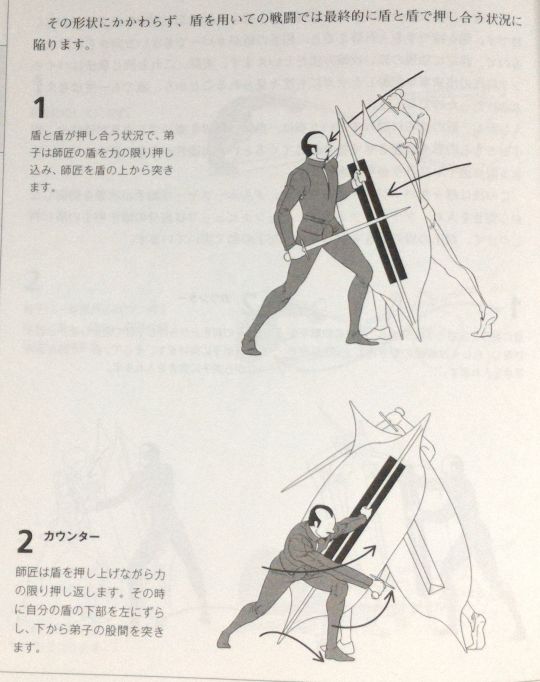

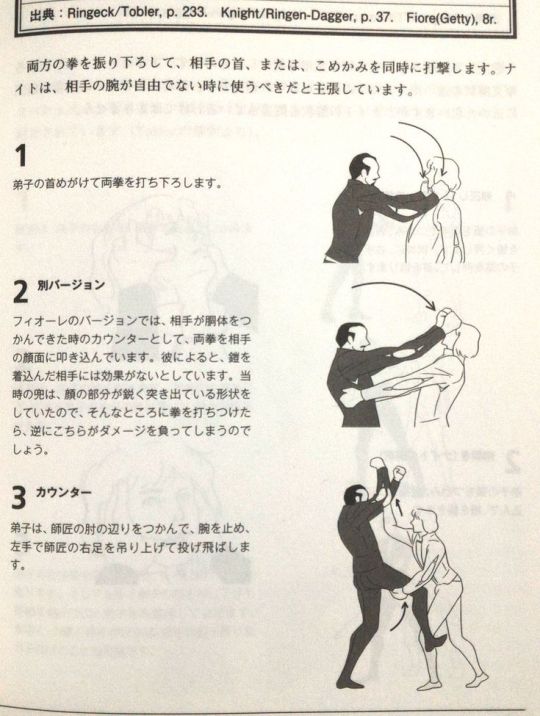

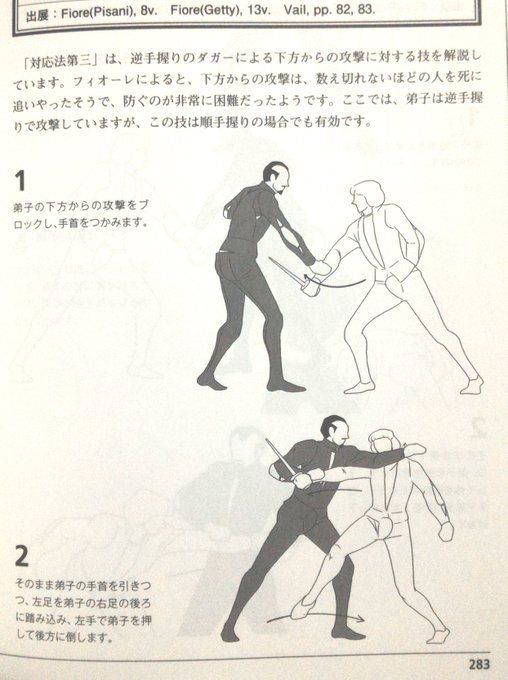

I need some help identifying the book where these came from. The illustrations are pretty sweet! EDIT: it's "The Martial Arts of Medieval Europe by Ryuta Osada" 中世ヨーロッパの武術 (by 長田 龍太) https://www.amazon.co.jp/-/en/%E9%95%B7%E7%94%B0-%E9%BE%8D%E5%A4%AA/e/B08JVK5R9W/ref=dp_byline_cont_book_1
#hema#historical european martial arts#HMA#historical#martial arts#sword#swordplay#japanese#manual#treatise#fiore#wallerstein#i33#marozzo#persian#ringen#abrazare#armizare#kunst des fechtens#kdf
97 notes
·
View notes
Video
youtube
A great video going over some of the most important techniques and principles of The Art of Combat or ‘Kunst Des Fechtens’ also known as KDF, but also tying those to more general mechanical groupings as well as positional situations that can help people connect the dots between various different moves. You can have different interpretations of historical systems than Daniel Pope(the person giving the lecture) but even just trying to apply this sort of systemic overview may help you figure out some things about fencing and how to think about it.
“ This in-class discussion from earlier this year is a fairly long and rambling discussion in which we broke out the trusty whiteboard markers to discuss some fencing theory relating to Meyer and Liechtenauer, but relevant to all fencing really. As our club isn't in training, I'm hoping that at least some of you will revisit the video because we haven't been able to revisit it in person. In essence, if we can reduce the exemplars in the text to general principles we find there's a lot less to think about while fencing. It's important to remember that these are generalisations - some of the genaral "rules" cited should never ben considered "laws" - you can break the rules all the time while fencing - as long as you know why! “
Here’s also another post overviewing KDF concepts in a more general framework that’s a bit less focused with mechanics and a bit more with the philosophy around it all and practical tactical issues as well that you may enjoy.
If you are interested in learning how to use a longsword check out these few links.
And here’s a masterpost about Joachim Meyer if you’re interested in his system specifically.
For anyone who hasn’t yet seen the following links:
Some advice on how to start studying the sources generally can be found in these older posts
Remember to check out A Guide to Starting a Liberation Martial Arts Gym as it may help with your own club/gym/dojo/school culture and approach.
Check out their curriculum too.
Fear is the Mind Killer: How to Build a Training Culture that Fosters Strength and Resilience by Kajetan Sadowski may be relevant as well.
“How We Learn to Move: A Revolution in the Way We Coach & Practice Sports Skills” by Rob Gray as well as this post that goes over the basics of his constraints lead, ecological approach.
Another useful book to check out is The Theory and Practice of Historical European Martial Arts (while about HEMA, a lot of it is applicable to other historical martial arts clubs dealing with research and recreation of old fighting systems).
Trauma informed coaching and why it matters
Why having a systematic approach to training can be beneficial
Why we may not want one attack 10 000 times, nor 10 000 attacks done once, but a third option.
How consent and opting in function and why it matters.
More on tactics in fencing
Open vs closed skills
The three primary factors to safety within historical fencing
Worth checking out are this blogs tags on pedagogy and teaching for other related useful posts.
And if you train any weapon based form of historical fencing check out the ‘HEMA game archive’ where you can find a plethora of different drills, focused sparring and game options to use for effective, useful and fun training.
For more on how to use youtube content for learning historical fencing I suggest checking out these older posts on the concept of video study of sparring and tournament footage.
Consider getting some patches of this sort or these cool rashguards to show support for good causes or a t-shirt like to send a good message while at training.
19 notes
·
View notes
Text
"Welche Kampfkünste kennst du?" And he was all "Ja."
#German Martial Arts#Fencing#kampfkuntse#Die Kunst des Fechtens#Paulus Hector Mair#The Locked Tomb#Its totally related Gideon Would LOVE this guy#Opus Amplissimum de Arte Athletica#Augsburg#bavaria#deutschland#Early New High German#Party hard#aristocrat#when hobbies become ways of life
1 note
·
View note
Text
Der Kleine von Yvonne und Jo. Der Pflegesohn. Adrien Agreste-Abklatsch.
#gzsz#gute zeiten schlechte zeiten#jo gerner#yvonne bode#lukas ruess#und jetz wollen sie ihn auch noch zum Fechten schicken#ich fass es nicht
0 notes
Text

Viscount Ernest Henry Baillie.
Willkommen bei Herzblatt! :D 💞 Hattet ihr damit gerechnet, dass sich hinter einigen Türchen auch die vier Gentlemen der Story verbergen werden? – Also rein methaporisch, hier gibt's ja nichts, was ihr suchen oder öffnen könnt.
Versteckt sich hinter dieser Wand etwa dein Herzblatt? 💗💞
Ernest Henry Baillie, der Jungspund des Quartetts – nicht das sie alle sonderlich alt sind, niemand von ihnen überschreitet die 30. Sorry an Age Gap-Lover. 😞 Ernest ist gerademal 21, Frontallappen noch nicht voll entwickelt, aber vielleicht kommt er deswegen auch auf die gloreiche Idee, all seinen Charme kalkulierend einzusetzen, um die alten Spinsters und Witwen Londons zu Berzirzen. Für ihn und seine kleine Familie wäre es am Besten, wenn die Dame einen Haufen Schotter besitzt und mit der Hälfte schon im Grab steht. Bei ihrem Tod würden sie Geld und ihr Anwesen erben, Ernest und seine Schwestern wären dann frei zu tun und zu lieben, wen und was sie wollen – Win-Win?
Bei seiner Geburt konnten es seine Eltern nicht erahnen, aber bei Ernest ist der Name Programm. Aber wer kann es dem Burschen auch verübeln, dass er ernst, wütend und ein wenig verbittert ist? Über Nacht wurde er in jungen Jahren zum Viscount, wirklich überraschend. Sein Studium an Oxford musste er auch abbrechen. Nicht, dass er dort irgendetwas gelernt hätte, worin er eine Prüfung hätte ablegen könnten — es sei denn für’s „Erbe sein“ gibt es einen Abschluss. Ärgerlich ist es dennoch allemal. Als wäre der plötzliche Tod des Vaters nicht genug gewesen, kam er mit einem Haufen Schulden, die sie teilweise mit dem Verkauf ihre Hab und Guts schon tilgen konnten – das gute Silber! Als wäre der Tod des Vaters nicht genug gewesen, folgte die Mutter ihrem Gatten schnell. Natürlich gibt Ernest seinem Vater die Schuld, ein Mann, den er jahrelang gerne mochte und nun hasst. Viel zu früh ist er Viscount und Oberhaupt der Familie geworden, ohne Geld, guten Ruf und jegliche Erfahrung. Die Zeit rennt ihm und seinen Schwestern davon, denn Geld, um sich einge gute Partie und somit eine sichere Zukunft für sich selbst und die gesamte Familie zu sichern, haben sie nicht wirklich. 1817 heißt es für sie go big or go home.
fc: oh sang-uk (hat mich der fechter zum fechten inspiriert? maybe.)
Okay, ich weiß, so wirklich viel Info bzw. wirklich viel neue Info gab es hier vielleicht nicht gerade. Aber ich hoffe das Moodboard "motiviert" zum Rätseln. :D So viel gibt's da nun leider auch nicht mehr.
Heute Morgen fiel mir dann nochmal auf, dass ich eventuell mit den Altern der Jungs nachrechnen muss, ob das alles noch so passt, wie ich’s mir gedacht habe. 😅 sollte es Änderungen geben, keine Sorge. Da wäre dann zB ernest anstatt 21 22, aber immer noch der jüngste.
34 notes
·
View notes
Text










Das Fechten
Martial arts are highly regarded among Guild members. Academy girls are encouraged to learn Fechten (fencing), Peitschenarbeit (whip work), and Schlagstock (quarterstaff). Many proudly carry scars and continue to practise these skills in the course of their careers in security and in the militia.
14 notes
·
View notes
Text
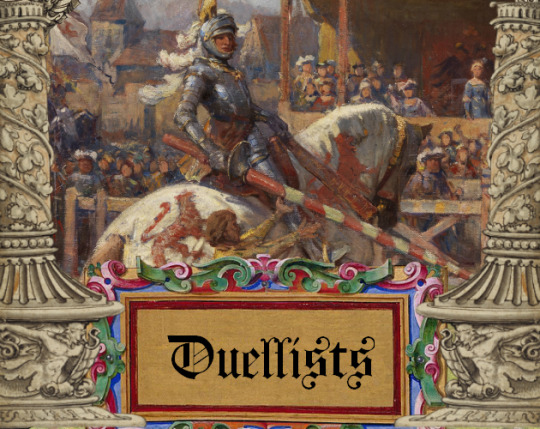
Duellists is rules light, D6, combat focused tabletop roleplaying game for between 3 to twenty players,. It draws inspiration from the fighting manuals of the 15th and 16th century, such as Joachim Meyer's 1570 Gründtliche Beschreibung der Kunst des Fechtens. Out on the 22 of February!
5 notes
·
View notes
Text
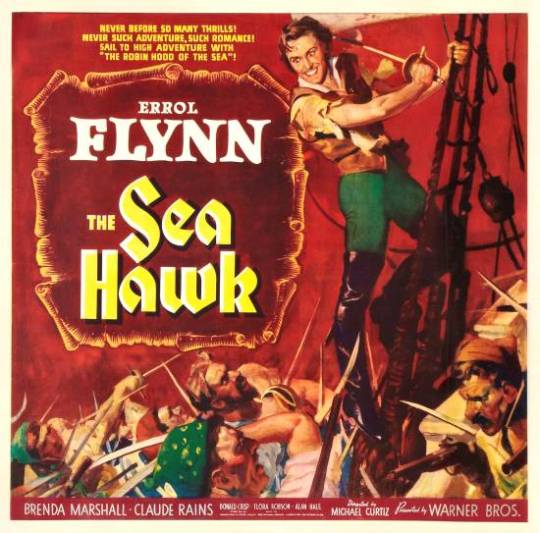
Der tapfere englische Freibeuter kämpft für seine reizende Königin gegen die unfairen, die Weltherrschaft anstrebenden Spanier, gewinnt das Herz einer schönen Frau, entfacht einen Aufstand unter Galeerensträflingen und bekommt einen legendären Korngold-Score. Einziger Wermutstropfen: er darf diesmal nicht mit Basil Rathbone fechten, sondern bloß mit dem nicht ganz so charismatischen und fechtbewanderten Henry Daniell.
#The Sea Hawk#Errol Flynn#Brenda Marshall#Claude Rains#Henry Daniell#Donald Crisp#Alan Hale#Una O'Connor#Film gesehen#Michael Curtiz#Erich Wolfgang Korngold
4 notes
·
View notes
Note
Really like/relate to your tags about everybody perking up when they hear you swordfight and losing interest immediately. and meanwhile you're like, "no, you don't understand, this is so important to me, i spent 3 years practicing this..."
(What discipline do you do? i don't do HEMA but it's really cool)
I'm a HEMA (Historical European Martial Arts) practitioner! I'm primarily trained in longsword, with a focus on the early Kunst des Fechtens styles described by Ringeck, pseudo-von Danzig, Lew, and other early contemporaries/students of Liechtenhauer. I also enjoy single-stick although I'm not amazing at it, and I love Destreza even though I am terrible at it.
(In plain English: I am quite good at fighting with unarmored longsword, ok at fighting with a single handed sword (no shield), and am bad at rapier.)
8 notes
·
View notes
Text
On Liechtenauer, Martial Arts, and a specific definition of winning.
To love for a lifetime is to fall in and out of infatuation. To see faults and determine to continue to put in the effort. It is to find yourself exasperated by the flaws in the place your affection is vested, only to come around again and remember where that love grew from to begin with. This essay is going to be about HEMA generally, about Kunst des Fechtens specifically, and about old books and why I don’t think anything passed down can belong to you.
This essay is going to be a series of disjointed thoughts that may or may not tie together at the end. There will be no citations, no references to specific pieces of text to prove a point. I’m not going to back anything up with data, and I’m not going to point to a specific part of something written and say “this is proof of what I mean.” This is no more and less than one person’s opinion, based purely on feelings and experience and anecdotes, for whatever that’s worth to the reader.
I have three books in my office that are over one hundred years old. Of these, one is a copy of Meditations by Marcus Aurelius. It does not actually belong to me, but it was loaned by a friend who moved out of state before I could give it back. It is beautiful and thought provoking, but—and this will be relevant later—it does not actually belong to me. It’s on-loan, even if that loan is extended. The second of these books is a copy of the collected poetry of Sir Walter Scott. I have not read it, mostly because I am afraid that it will fall apart if I flip too thoughtlessly through its pages. I found it at an antique store ten years ago, and I did not realize how precious it was until I got home, where I discovered a letter from a father to his daughter written in the early 1900’s, and a perfectly preserved rose pressed between the pages. I do not want to damage either, so I keep them where I found them. They are in my keeping, but like the first book, they do not feel like mine.
The third book is a copy of the Rubaiyat of Omar Khayyam. I had a weird introduction to this book, which I have also read many times. When I was seventeen I was standing in a grocery aisle in Oregon, looking at beer that I couldn’t legally drink yet. Out of the blue, an old man I had never met approached me and started quoting from the poems. I don’t remember exactly what stanza—I think it was one of the ones warning people about drinking too much—but it stuck in my head and over the years I have acquired multiple copies, though none are as rare as this one. Even though I found it in a box of old books a friend had in their trunk, this one, like all the others, feels like a gift that I need to safeguard, until someday I give it to someone else.
I do not think that old things truly belong to us. Especially not those that have been passed down, and I think that treating them like possessions to be altered or discarded at will is a very consumerist way of thinking about things that should have more value. Especially when those things were created with blood, sweat, and tears, and when their existence was paid for in lives. Even if those lives were ended a long time ago. Even with treasured family heirlooms or old things that we stumble across, we are far more transient than they are, and at most we only keep them for a little while.
I started studying HEMA in 2008 with Fiore, and I transitioned to training Kunst des Fechtens exclusively in 2015. Liechtenauer’s art occupies a strange space, as far as Martial Arts go. Like the majority of earlier HEMA sources, it does not possess a living lineage of teacher-to-student transmission. What we have as practitioners is a series of texts expressing common principles and techniques, with only hints and bits of secondary and primary sources that offer suggestions as to the traditions that surrounded these arts when they were living. Because we are working to recreate this art from what has been left to us, it is easy to imagine that what we are creating is wholly new and our own, and that we have the right to make it our own. It is a common sentiment in many modern martial arts that the goal of training is to create a fighter whose deepest skill is expressed by the number of wins in competition and freeplay, however that’s defined. A not uncommon line of thought in many HEMA circles, including ones to which I am very close, is that creating great fencers, great fighters, is the primary purpose of our study. In some cases the only purpose.
I don’t really think that way. I used to, or at least I used to think that I should, but I don’t anymore.
What distinguishes Liechtenauer from other sources for me is the same thing that changed how I look at HEMA and functionally at Martial Arts in general. More than a set of techniques, more than the Five Words or the Haupstuck themselves, it is a system that teaches understanding of its subject material in a very layered way. I know consensus on this isn’t settled, but it’s always been my impression that the Zettel and several of the glosses are laid out in deliberate manner where techniques are unpacked in order to express the principles that they are trying to teach. Each section goes on to break down multiple ways to express the principle, and then the next section begins to unpack the next principle that the student will most benefit from learning in that order.
This layering of concept on top of concept, with later sections closing the loops that earlier ones began, immediately caught my attention, and years later it still has a hold on me. I think there is something deeply useful about the style of teaching that feels implicit in the text. We’re missing big parts, obviously, in-person pedagogy and the associated traditions that were associated with how the art was transmitted directly from teacher to student, but you can infer a lot from the structure of the texts. One of the things that stands out to me is that these aren’t just a formula for learning a martial art, but an expression of the writer’s understandings of how to learn to begin with.
And ultimately it has been this idea of understanding, itself, that’s come to shape how I think about not just Kunst des Fechtens, not just HEMA, but just about everything I approach in my life. The longer I do this, the less I give a shit about winning anything. The less I care about competing, or proving, or demonstrating the worth and value of this art. Some of that might be burnout, but I think the lion’s share of it is that as I’ve gotten older the value of what I’m doing has started to feel self-evident. This is something that, despite its severed lineage, was once a carefully guarded secret, an artform by which people lived and died. I don’t intend to wax romantic or melodramatic, but that weight means something. Immense and broad efforts were made through it’s two-century history to preserve and proliferate Liechtenauer’s art, and even though those works ultimately failed and the tradition died out, I feel strongly that those of us working with its remnants today owe it to the memory and spirit of those distant humans to respect the drops of blood and sweat staining the pages they wrote. The best way to honor this for me is to look at what they left behind, and dedicate my effort to understanding.
I talked earlier about how old things don’t belong to us. How what is old and has been passed down is on-loan, at least in an ideal world, because we are not its owners, but its caretakers. Through understanding, the Liechtenauer you study becomes not something you simply absorb and use as you choose, but a reframing of your mind that reshapes and reorganizes the flow of your thoughts. The ceiling on what a person can come to understand is so much higher than the accomplishments that are directly limited by physical health, age, ability, and athleticism. You can only win for so long, but your ceiling for deepening your learning is—if you’re lucky—limited only by your lifespan. Via this, the art expresses itself more and more through not only our arms and hands, but through how we think and feel and breathe. I don’t believe that any art-form can be grasped without allowing it to alter the fabric of which you’re stitched together, and when understood this way, not only does the art not belong to you, but it can’t.
Because the art expresses itself through you. You belong to it. It’s passing through you as you live your life, like the old books that come into your keeping to safeguard.
Until such time as you have to pass them on to someone else.
11 notes
·
View notes
Text
keinen streit
mit dir lässt sich nicht gut diskutieren.
zum einen bist du eine schlechte verliererin. zum anderen rennst du vor jedem konflikt davon, vergräbst dich im schweigen oder schluckst alles wortlos, bis es unaushaltbar für dich wird.
noch nie habe ich jemanden so versierten und fähigen getroffen, der nicht dazu bereit ist, fair und offen zu fechten.
du sagst es falle dir schwer. ich biete dir jede bühne und meine abwesenheit aus allen situationen, die du zur gewinnung deiner klarheit brauchst.
doch so oft ich es versuche, ich werde das gefühl nicht los, dass du einfach nicht bereit bist dich der wahrheit und einem ehrlichen diskurs zu stellen. allmählich beginne ich die fehler in deiner vergangenheit nachzuvollziehen...
5 notes
·
View notes